Cultural Currency 8: Kajihara Yasumoto @ Gallery Utsuwakan
Susa, Suzu and Iki – Kajihara Yasumoto’s present
By Shimizu Minoru
2023.01.26
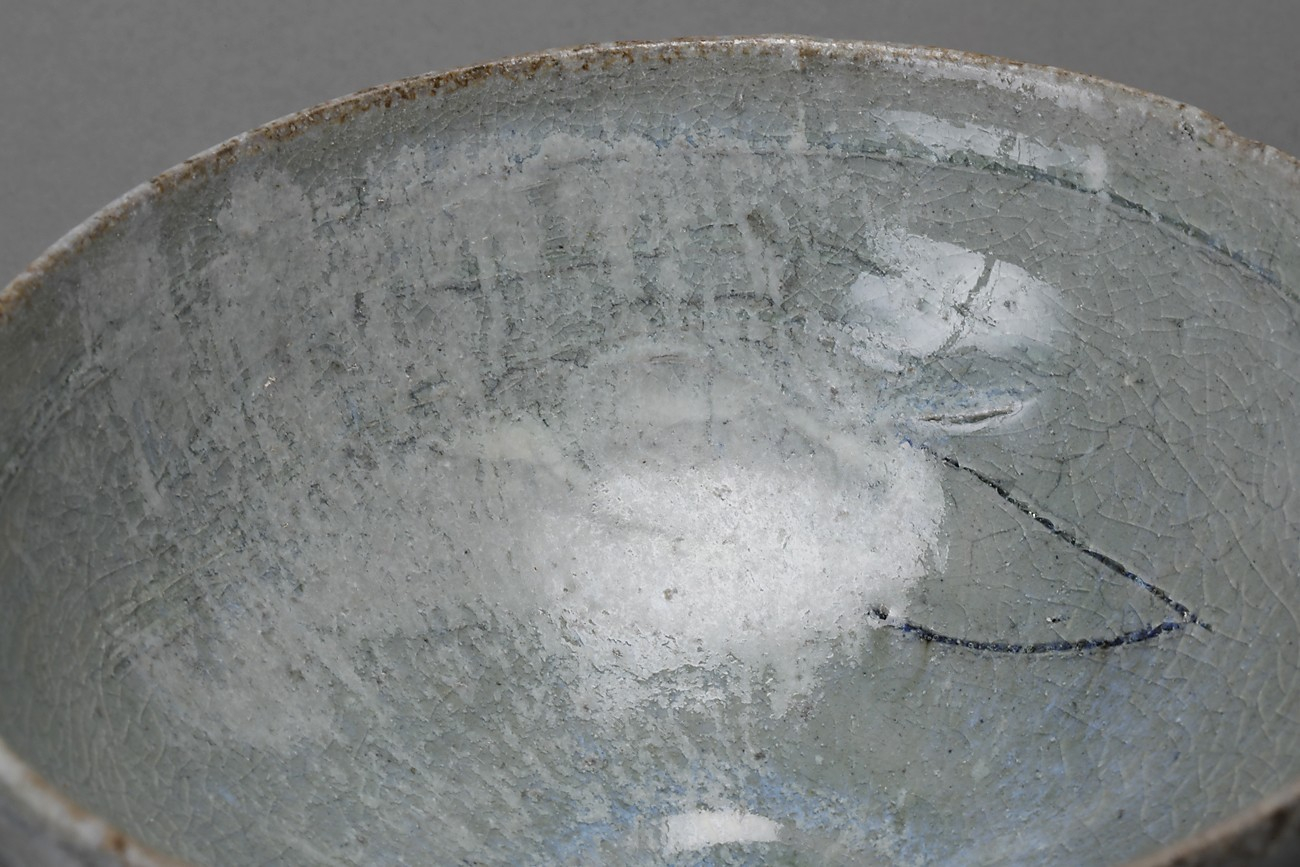
If one were to make a copy using modern techniques of an original piece of old ceramic ware handed down from generation to generation, the result could be either an “imitation” (if one makes clear it is a copy) or a “fake” (if one misrepresents the copy as the original). If one were to make works for which there are no originals but that might be mistaken for old ceramic ware (Shino, Oribe, Early Imari, etc.), these too could be either “fakes” (if one misrepresents them as items handed down from generation to generation) or “reproductions” (if accompanied by the name of the contemporary artist). With the exception of artists specializing in modern crafts and objects, one could say that in present-day Japan, though some are more skilled than others, almost all ceramicists are making “reproductions” of one sort or another (e.g. “Madaragaratsu sake cup, by Shimizu Minoru”). To use a term that is fashionable these days, we could perhaps say that in the final analysis, such “reproductions” amount to “appropriation.” Because the results are copies with no originals, the artists responsible for these reproductions have been making simulacra of old ceramic ware since long before the advent of appropriation.
Since the 1990s, however, as the excavation of old kilns has progressed and the accuracy of historical accounts of old ceramics has improved, resulting in the rewriting of the existing history that has relied on documentary records and items handed down from generation to generation, a tendency that could be called “fundamentalism” has emerged from among these reproductions. Kajihara Yasumoto (b. 1962) is an example of this tendency. It is fundamentalism in the sense that appearances are not important. Reproduction entails reproducing using modern techniques the current appearance of old ceramic ware that is hundreds of years old. In other words, it is like making an elderly person hundreds of years old from scratch. Fundamentalism involves recreating the materials and techniques of hundreds of years ago based on a new understanding of history and making old ceramic ware afresh. Because the distribution of geological strata does not change in just a few hundred years and it is inconceivable that there is any difference between the physicochemical phenomena that occur inside kilns now and in the past, fundamentalists can completely become ceramicists of the period as they go about their work. Kajihara is a Kogaratsu (old Karatsu) ceramicist reborn in the present, known as a ceramic artist who has ushered in a new era in Karatsu ware by successfully recreating it as “pure ishimono” (ceramics made solely using clay sourced from rock, such as sandstone, shale or granite) in accordance with the geology of the various parts of Karatsu.
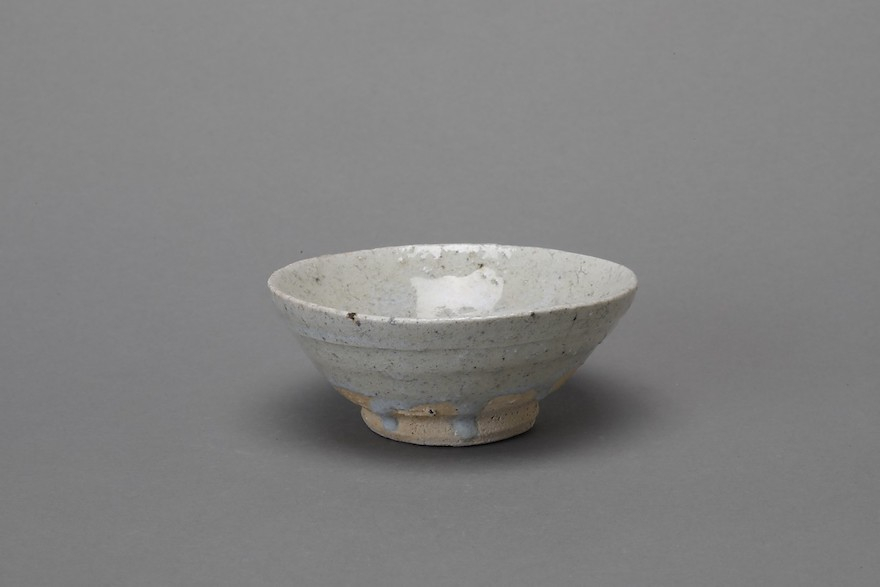
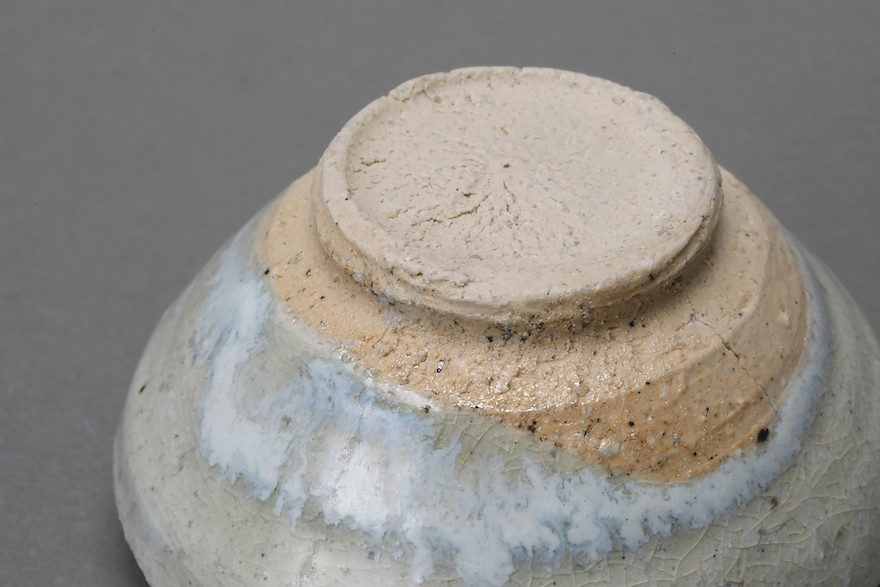 Kogaratsu refers to ceramics produced by Korean ceramicists “abducted” during the Imjin War (the invasions of Korea launched by Toyotomi Hideyoshi in 1592–98) and sent to Japan as experts versed in the latest ceramic techniques. In Kishitake and other parts of Karatsu they discovered material that could be used in place of the kaolin used on the Korean peninsula and employed these clays (sandstone, shale) and Joseon techniques in their practices. Before long, these ceramicists adapted their style to suit the tastes of the feudal lords who had congregated in Nagoya, the base from which the invasions of Korea were launched, or in other words the wabi-cha style of tea ceremony. They also passed on to ceramicists in Mino the latest multi-chambered climbing kiln technology (it was in these climbing kilns that Oribe and Shino Oribe ware were fired). Later, after a group of Korean ceramicists discovered kaolin in Arita Izumiyama, the production of porcelain began in Japan (Shogen-Imari, Shoki-Imari), and as if in inverse proportion to this, Kogaratsu ware declined. Kogaratsu arose at the intersection of Momoyama ware and Joseon ceramics. Not only did it have a decisive influence on the subsequent history of Japanese ceramic art, but it was from this intersection that we can trace this history back through the Joseon dynasty to the Goryeo dynasty and even further to the ceramics of the Northern Song dynasty, and back through Momoyama ware to Koseto, Sanage, Suemura and Sue ware, and from there back again to the Korean peninsula. In a sense, Kogaratsu is a summation of the history of East Asian ceramics. Furthermore, Kajihara’s ceramics not only represent the creation of new Kogaratsu (?), but also can be traced back to various eras in the history of East Asian ceramics, and the works spawned from this travel through time represent a new interpretation of early ceramics based on a new understanding of history.
Kogaratsu refers to ceramics produced by Korean ceramicists “abducted” during the Imjin War (the invasions of Korea launched by Toyotomi Hideyoshi in 1592–98) and sent to Japan as experts versed in the latest ceramic techniques. In Kishitake and other parts of Karatsu they discovered material that could be used in place of the kaolin used on the Korean peninsula and employed these clays (sandstone, shale) and Joseon techniques in their practices. Before long, these ceramicists adapted their style to suit the tastes of the feudal lords who had congregated in Nagoya, the base from which the invasions of Korea were launched, or in other words the wabi-cha style of tea ceremony. They also passed on to ceramicists in Mino the latest multi-chambered climbing kiln technology (it was in these climbing kilns that Oribe and Shino Oribe ware were fired). Later, after a group of Korean ceramicists discovered kaolin in Arita Izumiyama, the production of porcelain began in Japan (Shogen-Imari, Shoki-Imari), and as if in inverse proportion to this, Kogaratsu ware declined. Kogaratsu arose at the intersection of Momoyama ware and Joseon ceramics. Not only did it have a decisive influence on the subsequent history of Japanese ceramic art, but it was from this intersection that we can trace this history back through the Joseon dynasty to the Goryeo dynasty and even further to the ceramics of the Northern Song dynasty, and back through Momoyama ware to Koseto, Sanage, Suemura and Sue ware, and from there back again to the Korean peninsula. In a sense, Kogaratsu is a summation of the history of East Asian ceramics. Furthermore, Kajihara’s ceramics not only represent the creation of new Kogaratsu (?), but also can be traced back to various eras in the history of East Asian ceramics, and the works spawned from this travel through time represent a new interpretation of early ceramics based on a new understanding of history.
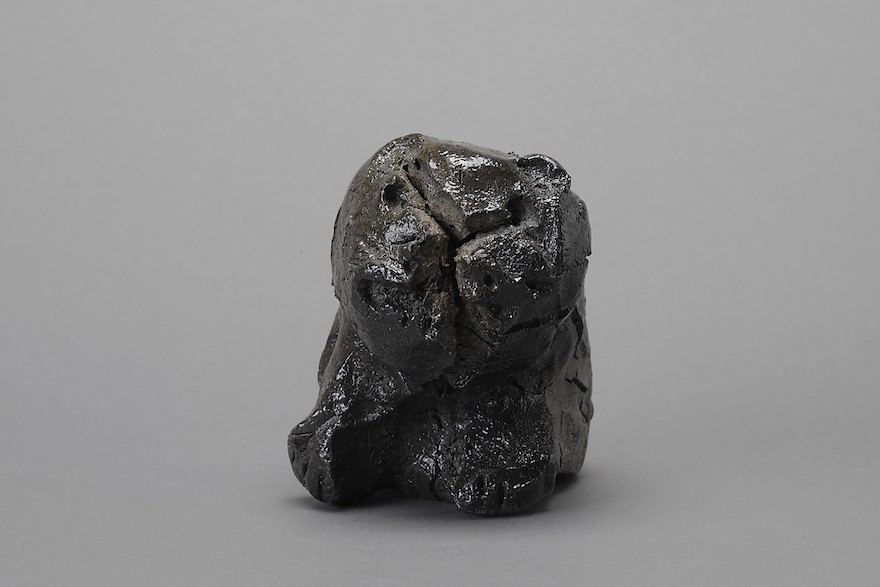 The series “Kogaratsu tenbyo” (Kogaratsu sketches) that appeared in the Nishinippon shimbun in 2020 clearly demonstrated the artist’s profound knowledge of East Asian ceramics backed up by his own 30-year-long practice. It would be no surprise if this gave him a kind of sense of having done it all. In fact, since publishing this series, Kajihara has begun to stray without hesitation from the Karatsu intersection into side roads and animal trails, producing weirdly cute (?) objects (items modelled on the Hizen komainu guardian dogs produced around the same time as Kogaratsu), objects made by simply firing rocks, crude but charming painted plates loosely formed by hand and completely lacking in intent with respect to modelling, and other works that have kept Kajihara fans on the edges of their seats. These deviations show no signs of stopping (examples of all of the above are included in this exhibition), but it is clear that they are deviations from the mode of “recreations” of Kogaratsu that do not affect its fundamental principles.
The series “Kogaratsu tenbyo” (Kogaratsu sketches) that appeared in the Nishinippon shimbun in 2020 clearly demonstrated the artist’s profound knowledge of East Asian ceramics backed up by his own 30-year-long practice. It would be no surprise if this gave him a kind of sense of having done it all. In fact, since publishing this series, Kajihara has begun to stray without hesitation from the Karatsu intersection into side roads and animal trails, producing weirdly cute (?) objects (items modelled on the Hizen komainu guardian dogs produced around the same time as Kogaratsu), objects made by simply firing rocks, crude but charming painted plates loosely formed by hand and completely lacking in intent with respect to modelling, and other works that have kept Kajihara fans on the edges of their seats. These deviations show no signs of stopping (examples of all of the above are included in this exhibition), but it is clear that they are deviations from the mode of “recreations” of Kogaratsu that do not affect its fundamental principles.
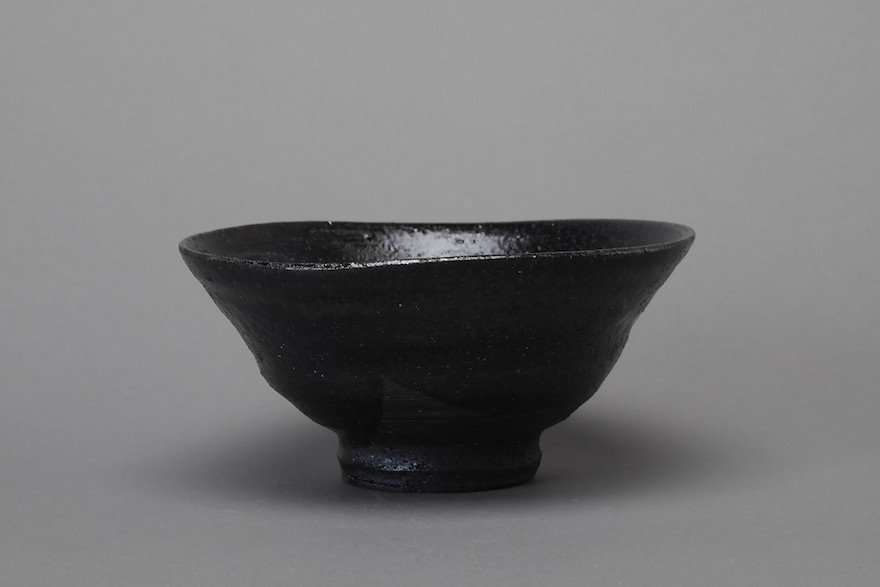
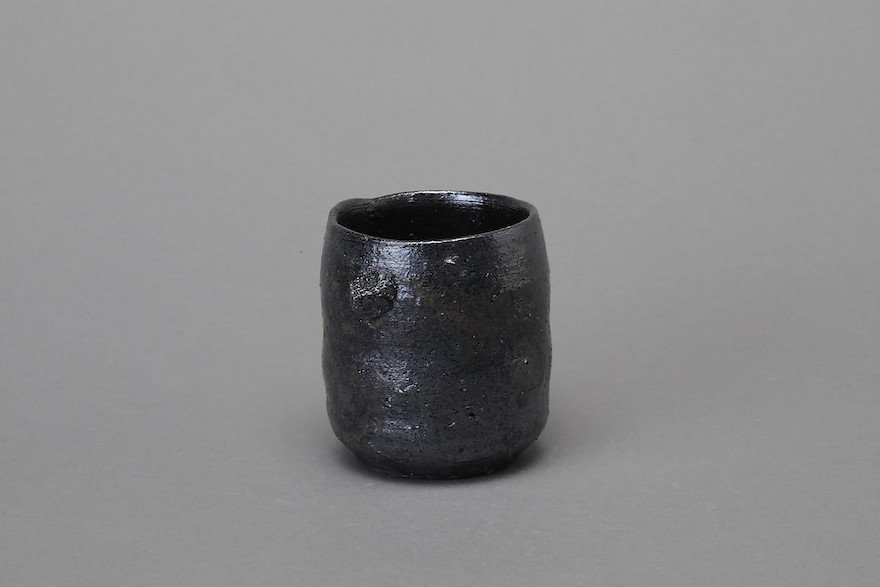
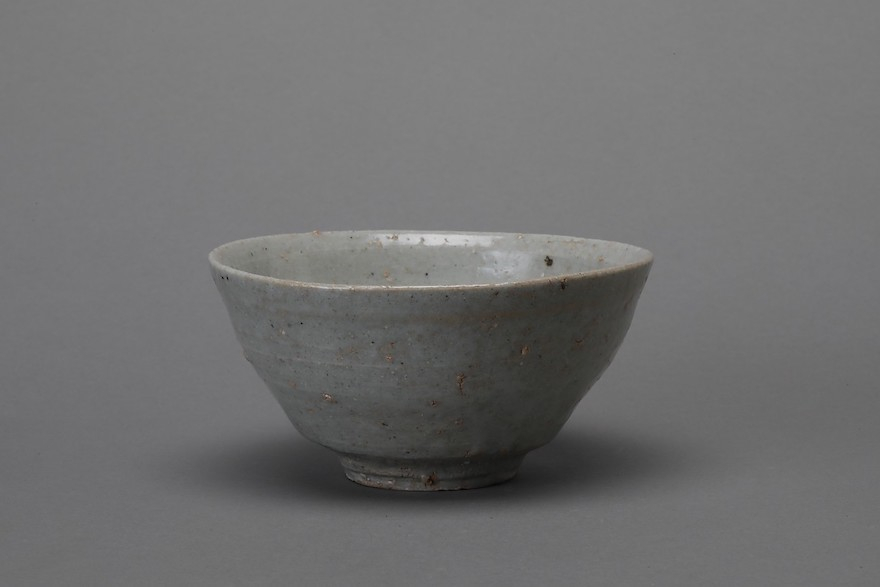
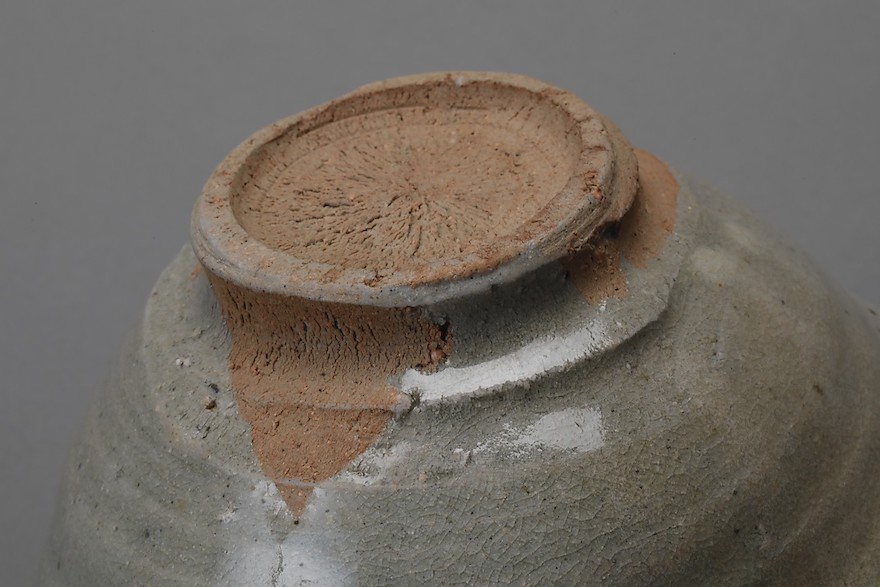 The first pattern of these deviations involves Kajihara traveling all over Japan, looking at the different clay types and producing “ceramics Korean ceramicists might have made had they been forced to settle there,” in the same way that the acute observations of the Korean ceramicists of old enabled them to make Kogaratsu ware by finding clay they could use in place of the sandy soil of their homeland (produced by the weathering of white granite). For a solo show last year, for example, Kajihara focused on inlaying that was rough, as if scratched with a nail, something absent from Kogaratsu but seen in Joseon inlaid celadon, using the technique to create a series of pieces inlaid with calligraphy by the Zen master Ryokan. The “Gogoan Kaolin” series arose from a trip the artist made to Gogoan, a hermit’s retreat in the grounds of Kokujoji temple in Tsubame, Niigata, known as Ryokan’s temple. Realizing that white kaolin was used in the structure’s foundations, he searched the surrounding hills on foot and made this series using the clay he found there. The “Iki-style Ware” series consists of fine pieces made by the artist after traveling from Karatsu to Iki to visit the grave of Kawai Sora, famous as the traveling companion of Matsuo Basho on his journeys. The pieces were made using the deep-black clay (Kajihara calls it “mokutan nendo,” or “charcoal clay”) he discovered again by chance in the nearby hills, whose plasticity allowing the shaping of smooth, thin vessels and fascinatingly elegant pitch-blackness still have unknown potential. As well, the “Susakaratsu” series recalls the history of wares from Susa, Yamaguchi, that were actually made by Kogaratsu ceramicists who were invited there (there are remains of Susakaratsu kilns).
The first pattern of these deviations involves Kajihara traveling all over Japan, looking at the different clay types and producing “ceramics Korean ceramicists might have made had they been forced to settle there,” in the same way that the acute observations of the Korean ceramicists of old enabled them to make Kogaratsu ware by finding clay they could use in place of the sandy soil of their homeland (produced by the weathering of white granite). For a solo show last year, for example, Kajihara focused on inlaying that was rough, as if scratched with a nail, something absent from Kogaratsu but seen in Joseon inlaid celadon, using the technique to create a series of pieces inlaid with calligraphy by the Zen master Ryokan. The “Gogoan Kaolin” series arose from a trip the artist made to Gogoan, a hermit’s retreat in the grounds of Kokujoji temple in Tsubame, Niigata, known as Ryokan’s temple. Realizing that white kaolin was used in the structure’s foundations, he searched the surrounding hills on foot and made this series using the clay he found there. The “Iki-style Ware” series consists of fine pieces made by the artist after traveling from Karatsu to Iki to visit the grave of Kawai Sora, famous as the traveling companion of Matsuo Basho on his journeys. The pieces were made using the deep-black clay (Kajihara calls it “mokutan nendo,” or “charcoal clay”) he discovered again by chance in the nearby hills, whose plasticity allowing the shaping of smooth, thin vessels and fascinatingly elegant pitch-blackness still have unknown potential. As well, the “Susakaratsu” series recalls the history of wares from Susa, Yamaguchi, that were actually made by Kogaratsu ceramicists who were invited there (there are remains of Susakaratsu kilns).
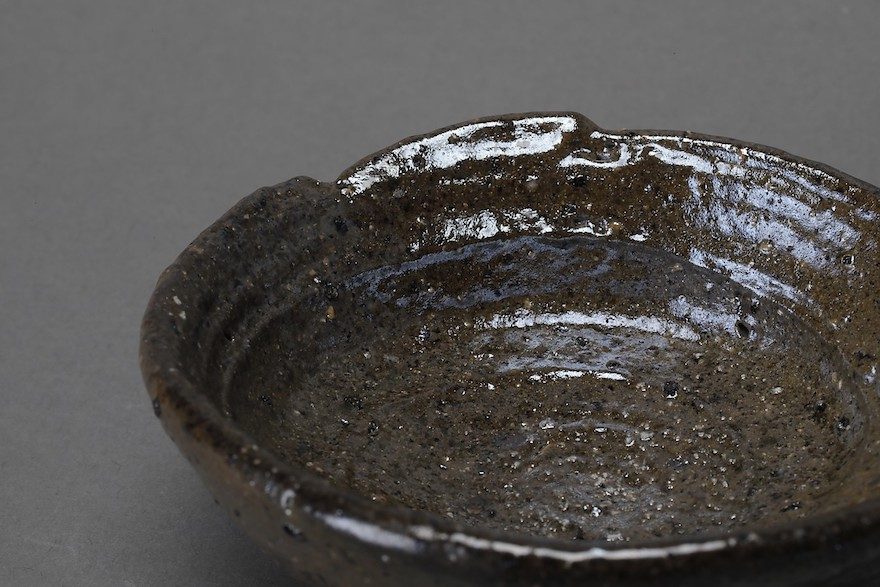
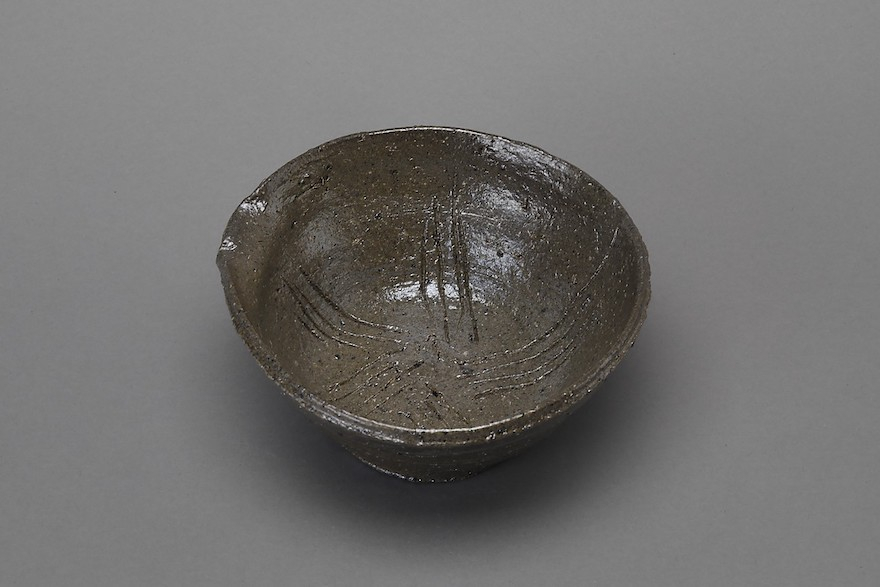
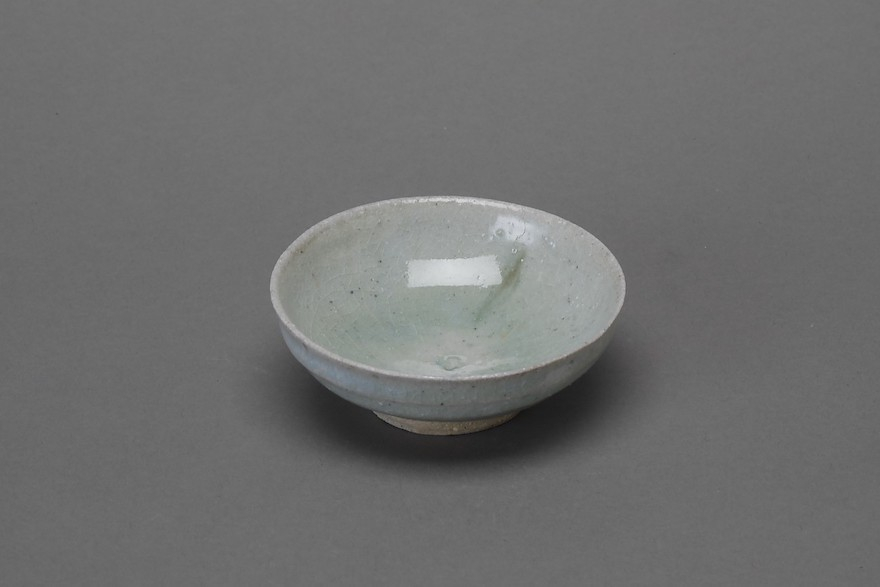
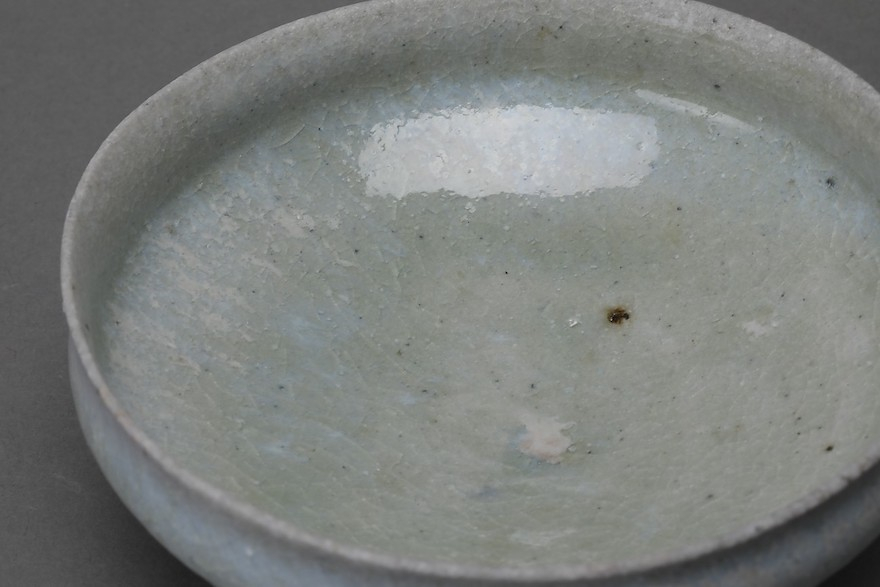 The second pattern of deviations is a reconfirmation of the history of ceramics. In the past, Kajihara has produced works that reference the ruins of the old Sabukaze kilns in Okayama (the old kins where Sue pottery, the ancestor of Bizen ware, was produced), as well as the Shilla and Gaya earthenware that formed their roots. The “Suzu” series included in this exhibition comprises works in which the diatomaceous earth (diatomaceous mudstone) used to make the Suzu pottery for which the old Sue ware kilns are known is handled in Kajihara’s inimitable style, but this style is based not on the theory that the Suzu techniques were imported directly from the Korean Peninsula (the theory of southward migration), but on the theory that they came from the ancient provinces around the capital (the theory of northward migration). The “Otani Sansui Glaze” series with its beautiful pale blue colors is related to the “Qingliang Temple Glaze” and “Sky Blue Glaze” series that were created as homages to Northern Song dynasty Ru ware and pursue a blue that derives from glaze emulsions whose main component is iron, resulting in works whose common denominator appears to have chosen from a genealogy along the lines of Ru → Kokuryo celadon porcelain → Hoeryong ware → Madaragaratsu ware. When one thinks that from here, Kajihara might once again begin to fix his gaze on Chinese ceramics, it is almost worth being kept on the edge of one’s seat.
The second pattern of deviations is a reconfirmation of the history of ceramics. In the past, Kajihara has produced works that reference the ruins of the old Sabukaze kilns in Okayama (the old kins where Sue pottery, the ancestor of Bizen ware, was produced), as well as the Shilla and Gaya earthenware that formed their roots. The “Suzu” series included in this exhibition comprises works in which the diatomaceous earth (diatomaceous mudstone) used to make the Suzu pottery for which the old Sue ware kilns are known is handled in Kajihara’s inimitable style, but this style is based not on the theory that the Suzu techniques were imported directly from the Korean Peninsula (the theory of southward migration), but on the theory that they came from the ancient provinces around the capital (the theory of northward migration). The “Otani Sansui Glaze” series with its beautiful pale blue colors is related to the “Qingliang Temple Glaze” and “Sky Blue Glaze” series that were created as homages to Northern Song dynasty Ru ware and pursue a blue that derives from glaze emulsions whose main component is iron, resulting in works whose common denominator appears to have chosen from a genealogy along the lines of Ru → Kokuryo celadon porcelain → Hoeryong ware → Madaragaratsu ware. When one thinks that from here, Kajihara might once again begin to fix his gaze on Chinese ceramics, it is almost worth being kept on the edge of one’s seat.
——————————–
Shimizu Minoru
Critic. Professor, Doshisha University.
Kajihara Yasumoto Exhibition was held at Gallery Utsuwakan, January 7 through 22, 2023.
Since the 1990s, however, as the excavation of old kilns has progressed and the accuracy of historical accounts of old ceramics has improved, resulting in the rewriting of the existing history that has relied on documentary records and items handed down from generation to generation, a tendency that could be called “fundamentalism” has emerged from among these reproductions. Kajihara Yasumoto (b. 1962) is an example of this tendency. It is fundamentalism in the sense that appearances are not important. Reproduction entails reproducing using modern techniques the current appearance of old ceramic ware that is hundreds of years old. In other words, it is like making an elderly person hundreds of years old from scratch. Fundamentalism involves recreating the materials and techniques of hundreds of years ago based on a new understanding of history and making old ceramic ware afresh. Because the distribution of geological strata does not change in just a few hundred years and it is inconceivable that there is any difference between the physicochemical phenomena that occur inside kilns now and in the past, fundamentalists can completely become ceramicists of the period as they go about their work. Kajihara is a Kogaratsu (old Karatsu) ceramicist reborn in the present, known as a ceramic artist who has ushered in a new era in Karatsu ware by successfully recreating it as “pure ishimono” (ceramics made solely using clay sourced from rock, such as sandstone, shale or granite) in accordance with the geology of the various parts of Karatsu.

Gogoan sake cup

Foot of Gogoan cup

Korean shrine dog “Tehe”

Iki-style black Irabo tea bowl

Iki-style cup with handles

Susa-Karatsu tea bowl

Foot of Susa-Karatsu tea bowl

Suzu sake cup

Suzu katakuchi bowl with spout

Otani Sansui-yu sake cup

Otani Sansui-yu Badarai cup
——————————–
Shimizu Minoru
Critic. Professor, Doshisha University.
Kajihara Yasumoto Exhibition was held at Gallery Utsuwakan, January 7 through 22, 2023.